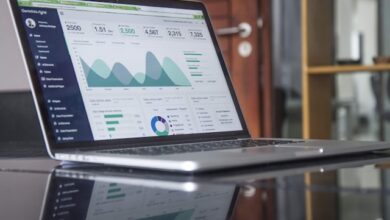How Is Technology Transforming The Workplace

Businesses who fail to innovate and adopt a tech-forward company strategy risk falling behind the competition in today’s quickly changing work environment. Technology plays an essential role in business because new software solutions and goods assist firms in resolving operational issues.
Understanding New Technology In The Workplace
Starting to emerge work innovations like machine learning (ML), artificial intelligence (AI), and deep learning are transforming the way we work.
How Is Technology Changing The Workplace
er significant business value. Some benefits associated with using technologies in the workplace include:
- Using automation to simplify procedures
- Bringing communication channels together
- Using analytics to enhance decision-making
- assisting in the synchronization of the entire organisation
- Improved team collaboration
- Increasing employee satisfaction and efficiency
Technology is an essential element of the workplace’s natural progression. The COVID-19 pandemic, on the other hand, hastened the transition from the old work model to today’s digital workplace. The technologies mentioned below are shaping the future of work and how we do business.
Some Technologies Shaping The Future Of Work
1. Talent Acquisition With Virtual Hiring
To win the struggle for talent in a tight job market, recruiters must eliminate laborious paper operations. Human resource teams, on the other hand, use technologies that enable virtual hiring procedures. Recruiters have long used applicant tracking systems (ATS), which are an excellent tool for attracting, identifying, and hiring the best candidates. By automating screening, scheduling interviews, and matching candidates’ abilities to job postings, talent acquisition professionals can establish an effective pipeline and boost productivity.
Yet, many companies are increasingly combining complementary technology, such as candidate relationship management systems (CRM), to form a bigger ecosystem. Furthermore, we are now seeing broad usage of AI solutions to assist eliminate prejudice in hiring choices and promote diversity, equality, and inclusion activities related to recruiting. Moreover, technology reduces administrative burdens and offers recruiters more time to focus on human-centric strategies such as improving candidate experience.
2. Supporting Remote And Hybrid Work
It shouldn’t be shocking that employees value job flexibility. Indeed, according to one poll, employees strongly like (97%) remote work and would prefer to continue working remotely. Remote and hybrid work schedules are here to stay, despite the logistical challenges they entail.
The use of technology is critical to providing flexibility. As a result of this transformation, more leaders are investing in software and platforms to ensure business continuity under these new conditions. Companies are investing in collaborative tools, virtual wellness, and workforce management (WFM) systems as a result. Some of the technologies and instruments that enable flexible scheduling are as follows:
- Infrastructure and cloud hosting
- Cybersecurity technology
- Remote security technologies that are mobile and collaborative
- Platforms and applications for workforce management
Cloud-based WFM systems, self-service apps, and dynamic work-scheduling tools enable organisations to maintain a highly productive staff, whether they work in an office or from home.
3. New Tech For Customizable Learning
Companies are shifting away from a one-size-fits-all approach to Learning and Development. Elegant Learning Management Systems now offer a tailored approach to staff reskilling and upskilling. Any employee’s knowledge gaps may now be detected and closed using technology. Workers can feel empowered and inspired when they can create their own learning pathways with the material and methods that best suit them.
Employees can learn at their own speed using online coaching, eLearning platforms, or Virtual Reality (VR) simulations in this individualized learning strategy. Quickly evolving Augmented Reality (AR) and Virtual Reality (VR) technologies are becoming widely used solutions for employee training and performance improvement.
Moreover, companies are devices workplace learning to motivate staff. From new employee onboarding to soft skills development, every monotonous chore may be made into a joyful game. Using the a digital environment and game-like elements that give scores and awards drives employees to achieve specific goals or objectives.
4. Analytics And Decision Intelligence
Analytics and business intelligence have evolved into formidable tools that may result in massive profits for businesses. By collecting real-time employee productivity, performance, and engagement data, analytics can shine a light on what’s moving around the firm. The use of Big Data in the workforce provides executive leadership with a comprehensive view of the workforce and reliable information backed up by statistics and facts. As a result, leaders may make better decisions by monitoring and evaluating key aspects of the workforce.
Decision intelligence can assist in predicting and tracking actions, as well as forecasting future talent needs. It is not to argue that human choices will be supplanted; rather, the power of analytics, AI, and data will enhance them.
5. Workplace Health And Wellness
But, when it comes to establishing a health insurance program, one size does not fit all. Because health is personal, a personalised healthcare strategy is essential for the success of corporate wellness initiatives. Cognitive analytics, Big Data, and other technology all help to tailor corporate wellness programmes to the best health solution for employees.
Some of the most current HR technology tools attempt to promote workers’ physical well-being through gamification and wearable health devices. Automation tools and chatbots can encourage healthy habits and identify those with greater health-risk profiles. Among high-risk groups are:
- Risks that come with lifestyle and physical health
- Obesity, diabetes, hypertensive, and smoking
- Risks to one’s mental health
- Employee burnout, depression, anxiety, and stress
- Workplace safety risks
- Industrial injuries, poor air quality
Employers may improve their knowledge of their workplace and its employees by collecting this data.
6. Improving The Employee Experience
Organizations have had to adapt to a radically changing setting for the work, workforce, and world of work in recent years. The “Great Resignation,” “Great Reevaluation,” and now “Great Reevaluation” all convey an important message to employers about the sort of culture required to retain top employees. As a result, improving the employee experience has become one of the top goals for human resource departments (EX).
Theses days, technology is weaved into every facet of an employee’s journey from start to finish, and every moment in between is a component of their employee experience. Using the right tools and technology is critical to improve employees’ online experience and empowering them. Employees must also submit feedback in order to bridge any gaps and truly understand how they interact with the tools available and where there is opportunity for development.
7. Recognition And Reward
Technology is also changing how companies recognise and reward their staff. Employees in the modern workplace want prompt and rapid acknowledgment, which poses a challenge for companies with flexible work arrangements or a huge staff. The usage of technology has made it simpler to recognise and reward employees in a more seamless and timely manner. Moreover, employee recognition software packages provide data-driven insights into how work performance and employee engagement are related to the amount of recognition and awards given.
Statistics may also indicate departments that are constantly reaching objectives and succeeding. Utilizing analytics and digital platforms to administer employee recognition allows firms to strengthen their relationships with their employees and create a supportive work environment.
What Are The Risks Of The Digital Workplace
While technology offers several benefits to companies, it also brings important hazards. Recognizing and understanding the potential risks of new technologies is a vital aspect in altering the way work is done. Some of the potential hazards of a digital workplace include:
- heightened vulnerability to cyber-attacks
- Concerns regarding employee privacy and data collecting
- Compliance with the provisions of government regulations
- Personal relationship is lacking
- Legal implications of digital tools
- Found that a lack as a result of digital friction
Without a question, technology provides businesses with several options to enhance and improve their job performance. At the same time, employees’ personal information is routinely collected, and possible intrusions of privacy are prevalent. The use of contemporary technology might also expose businesses to cyber threats.
Furthermore, today’s office technology, communication software, and other human resources technologies can quickly overload employees. Digital employees frequently miss vital information because they are easily distracted by the volume of emails, notifications, and updates. To address these digital workplace threats, solid risk management strategies must be devised, developed, and assessed on a regular basis.
Conclusion
The traditional business environment is constantly shifting, as is the role and relevance of technology. Today’s new technologies strive to make the workplace more effective and efficient, and to make it more insightful and intelligent for everyone. As a result, corporate executives must pay careful attention to the newest technological innovations and harness technology to achieve their goals.



